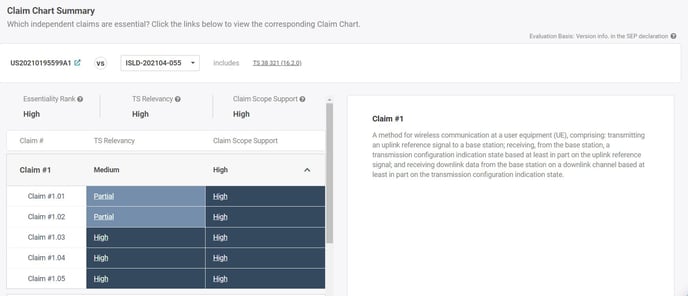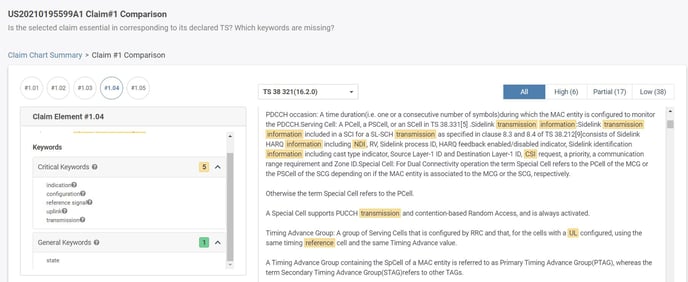How do Essentiality Rankings work?
Establishing the Essentiality of Standard Essential Patents Through Claim Chart Mapping

Summary
SEP OmniLytics’ Essentiality Rankings and its contributing indicators are exclusive features designed to assist our users by sorting out the standard-essential patents that need to be further scrutinized and assessing the effort to do so.
Overdeclaration
As discussed in our over-declaration article, several studies have found that not all SEPs are truly essential, suggesting that only approximately 50% of the patent families examined have at least one patent that is essential or probably essential.
To help alleviate this issue, Patentcloud’s SEP OmniLytics Team has come up with Essentiality Rankings to conduct preliminary discernment of the essentiality of SEPs.
How do Essentiality Rankings work?
SEP OmniLytics’ Essentiality Rankings are derived from the combination of two indicators — TS Relevancy and Claim Scope Support.
- TS Relevancy
The TS Relevancy indicator reflects how a self-declared SEP (declared at ETSI) is essential to its declared standards. This is done by mapping a SEP’s independent claims to its corresponding technical specifications (as proposed by the declarant) and can be seen in the Automated Claim Chart. - Claim Scope Support
Claim Scope Support is another indicator that provides proof of essentiality by examining the quality of a patent. Also using an automated claim chart, this indicator maps a patent’s independent claims to its own specification to determine the definiteness of its claims.

How is claim chart mapping conducted?
For both TS Relevancy and Claim Scope Support, an automated claim chart is generated by mapping keywords to find a textual correlation between the declared TS, independent claims, and the patent specification. The mapped keywords include critical keywords and general keywords.
- Critical keywords indicate terms, abbreviations, and related terms that can be found and defined in 3GPP technical specifications.
- General keywords are other technical terms that can be found in patents.

How are the SEPs ranked with Essentiality Rankings?
SEP OmniLytics‘ Essentiality Rankings include High, Medium, and Low rankings for the ETSI-declared SEPs in our database. A “High” ranking can only be derived from “High” rankings for both the TS Relevancy and Claim Scope Support indicators. However, a SEP with a “Low” ranking does not necessarily indicate that it is not essential but simply indicates that further examination is required to establish its essentiality.